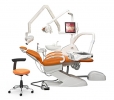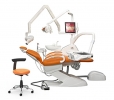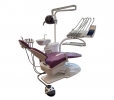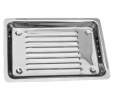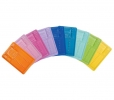Operatory design that benefits the three Es
John Cox, vice president of technology sales at Henry Schein, says his team looks at today’s operatory design with the perspective of the three Es:
- Experience: The patient should experience a spa-like environment and esthetics, and the operatory design should bring the patient into the decision making for his or her care.
- Efficiency: The design should respond to tremendous pressure on dental professionals to do more dentistry in the same hours to recoup their expenses and respect patients’ time, who likely don’t want to sit around a dental office.
- Ergonomics: An operatory design should facilitate better working postures and body positions to prevent injury and prolong the careers of the dental professionals who use it.

A deeper dive into ergonomics
Bethany Valachi, PT, DPT, MS, CEAS, a dental ergonomic speaker and professor of ergonomics at the Oregon Health Sciences University School of Dentistry, says the human body was made to move in certain anatomical planes. When we change the position of our bodies and move out of these planes, we can start to create damage in the joints.
“When the body is in a non-neutral position for prolonged periods of time, it causes accelerated wear and tear on the body and musculoskeletal strain can lead to disc herniation and a number of different things,” Dr. Valachi says.
Dr. Valachi says resolving ergonomic challenges in the operatory that compromise posture must be a priority for any dental professional. Also, there’s the aspect of efficiency. She says the dental assistant should have things within a certain comfortable radius. If not, then the assistant can’t make efficient transfers.

What’s trending today?
Cox says technology brings the patient into the treatment discussion and facilitates the person’s self-diagnosis. Patients can see their smile, the defects and what issues they want to address. They’re part of the process with the dental team.
“In the old days, the dentist would come in and say, ‘Hey, here’s what we’re going to do.’ Now, the patient is involved. They understand what the issues are, what the treatment plan is going to be and how long it’s going to take. They’re very involved,” Cox says.
Cox credits technology’s communication component for enabling this involvement. Diagnostic tools and intraoral cameras make it possible to see the fracture, decay, or periodontal disease “larger than life” on a 60-inch monitor.
“It could be intraoral imaging that allows them to take an X-ray and show it up on the screen immediately, with no delay, so the whole patient interaction is streamlined and much more efficient than it’s ever been,” Cox says.
Digital impressions and CAD/CAM have played a part in the transition of operatory design, too. With these technologies built into the practice, the dentist can now display the problem, do the procedure and deliver the final restoration in one visit.

What’s next in operatory design?
Leduc is excited about a trend toward a medical approach, which relates a lot to privacy. Leduc thinks patients like the quiet of a private area for their treatment. Noise, he says, can be stressful for patients.
“When you have four operatories and you hear all of them at the same time, that’s more stressful than just your own. When you hear the next patient that’s 6 years old screaming and crying, that doesn’t reduce your stress level,” he says.
He has seen doctors trending toward surgical ops that are private and quiet. Leduc and his team have taken this idea and applied it to the whole office.
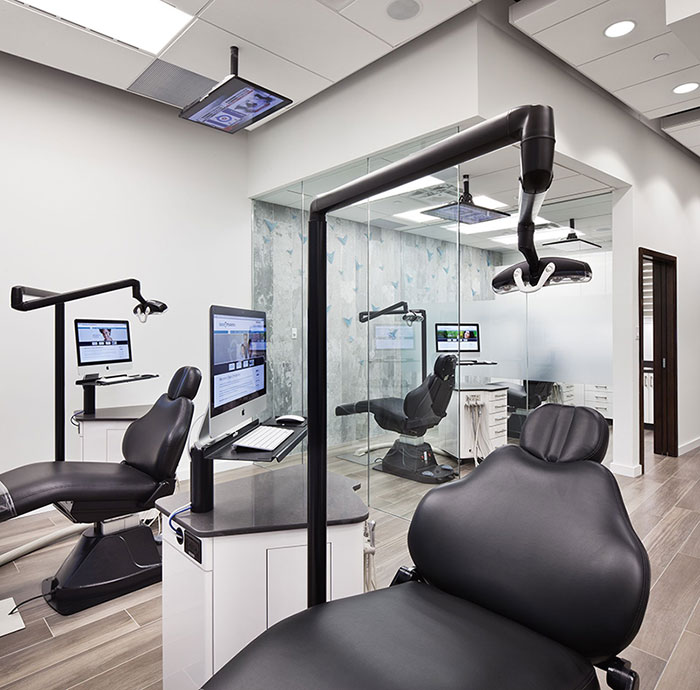
“We found ways to accommodate this and reduce the square footage needed for each operatory,” he says.
Cox says he’s starting to see smart devices and digital impression scanners built into the dental delivery unit as well as HD cameras and other diagnostic tools. The technology devices are also changing with added functionality, which he describes as “smarter” devices. For example, TRIOS incorporated caries detection and transillumination into its digital scanning device, and the Planmeca Emerald™ included caries detection.
“It used to be you’d have one device that was a camera, and another device could be a diagnostic caries detection device, and another device would handle digital impressions. Now, we’re starting to see all these things come together where one device is doing all these jobs, and I think we’ll continue to see more of that moving forward,”

